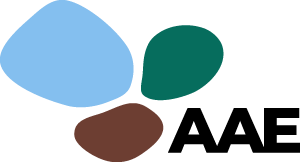Narsaq, Kallaallit Nunaat (Greenland), April 2025

The Nomadic Hub of Arctic Art Education, a travelling centre for Arctic art education, established its contemporary art education activities in early April 2025 in Narsaq, South Greenland, with a focus on the region’s cultural, social, and ecological conditions.
This time, the course—combining distance studies and fieldwork from the Arctic University’s ASAD network—was carried out not only by the University of Lapland but also by the University of Greenland Ilisimatusarfik, the Siunissaq Association for Art and Social Psychology, the Narsaq International Research Station (NIRS), and the municipality of Kujalleq in Greenland. From Norway, the Nord University and Polarsirkelen Friluftsråd, an association for outdoor education, participated. From Rovaniemi, the multidisciplinary arts association Piste contributed with movement and drama pedagogy.
The art-based activities in Narsaq, a small Inuit community of around 1,400 inhabitants, offered teacher educators, postgraduate students, and students of art and education a unique perspective on the encounter between Greenlandic life and the school system, highlighting both opportunities and challenges.
“Inside the school building, it felt like any other Nordic primary school. But once we stepped outside, we were surrounded by a unique environment and culture, where the children and youth were the experts, and we were the learners. In developing Arctic art education, we asked how this eco-cultural knowledge could be made visible and placed at the centre of learning and interaction,”
project coordinator and university lecturer
Annamari Manninen
Representatives from the Narsaq community—local museum staff, cultural coordinators, teachers, youth workers, care home employees, students, and young people—were all actively involved in the multidisciplinary collaboration. The collaborative artworks were presented in a pop-up exhibition, which attracted around 100 visitors interested in the activities.

The Nomadic Hub of Arctic Art Education in Narsaq is part of the broader New Genre Arctic Art Education (AAE) project.
“In the workshops, we explored participants’ everyday life and places through a combination of art and science. The artworks were then exhibited and shared with the community. This approach introduces artistic creation and scientific inquiry methods while supporting local identity and fostering connections between community members,”
“I see this fieldwork as a great example of the University of the Arctic’s efforts to promote interdisciplinary cooperation, involve Northern residents in academic activities, and strengthen ties with Indigenous peoples and multiethnic communities through decolonial research and education,” stated Emeritus Professor Timo Jokela, who initiated the AAE activities.
Themes such as Indigenous cultures, decolonisation, and the sustainability transition were central to the workshops. Doctoral researchers Suvi Autio and Niko Väistö, working in the Sustainability Transition (SusTra) doctoral pilot, guided a group of upper secondary students from Inusullivik in producing a short film.

“Storytelling helped the youth build their sense of identity. Their short film highlighted themes such as the continuity of hunting traditions, local handicraft skills, future studies, and protecting Greenland from the threats of mining,”
the instructors of Inusullivik College
The AAE initiative and its sub-projects are currently supported by funding from, among others, the Nordic Council of Ministers / Nordplus Horizontal, DAHES / UArctic, and the Lessons of the Land project coordinated by Memorial University of Canada.



